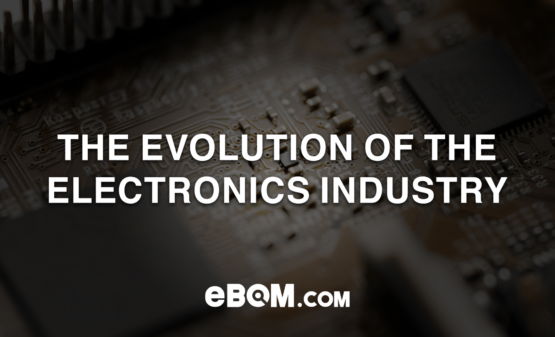The electronics industry has developed leaps and bounds over the past century. With the Consumer Electronics segment projected to reach a revenue of $415,897m in 2021 with an annual growth rate of 4.0%, stated by Statista, the industry is not slowing down anytime soon.
Early Electronics
It was 1835 when the first electronic device was invented, the Relay. The relay is a remote switch controlled by electricity, invented by Joseph Henry an American scientist. The first invented Relay was used as part of a telegraph system to be used in long distance telegraph circuits, repeating signals from across the circuit. Since then, relays found extensive use in telephone exchanges and early computers to perform logical operations, the start of the evolution.
Becoming a Connected World
Despite temporary barriers such as COVID19, we are a very connected world. We are connected in many ways, whether it is socially, politically, economically, or environmentally. Thanks to the growth in transport and digital communications, the expansion of organisations has occurred due to digital exposure, leading to further potential sales. For example, a customer can order an electronic component part from overseas and receive the product within a few days, rather than physically travelling to a shop – easy and simple. Countries such as China produce relatively cheap components because of a lower labour wage than countries such as the UK, therefore this is a popular choice for customers. This theory is backed by data stated by Statista; most revenue will be generated by China in 2021, a predicted $162, 038m.
Environmental Awareness
As the purpose of electronics has diversified massively due to the advancements of technology increasing, we are now using electronics for numerous tasks such as; research motives rather than just controlling the flow of electrical currents for the purpose of information processing. A large way in which we access environmental data is primarily from electronics. Electronics allow us to monitor global warming changes such as rising sea levels, global temperature increase and greenhouse gas levels. With the advanced technology we have nowadays, it is easy to access environmental data and see the impacts we are causing on the planet’s wellbeing. In today’s day and age, we can predict and monitor abnormal weather and temperatures. For example, using the most advanced technology, NASA were able to discover that the oceans have absorbed much of this increased heat, with the top 700 meters (about 2,300 feet) of ocean showing warming of more than 0.4 degrees Fahrenheit since 1969. Along with this, the advanced electronics which NASA have created provides us with the data that the Greenland and Antarctic ice sheets have decreased in mass. Data from NASA’s Gravity Recovery and Climate Experiment show Greenland lost an average of 286 billion tons of ice per year between 1993 and 2016. Without the electronics industry evolution, we would not know the extent of the damage we have caused to the environment.
How Electronics Contributed to the Automotive Evolution
In the 1800s, inventors tried to manufacturer cars that would run well enough to use every day, from steam to gasoline to electricity based. It was by 1905 when gasoline cars were more popular than steam or electric cars, this was mainly because they could travel further and were easier to use. A few years later the Stanley Runabout car was built, however, purely for speed at a whooping 35 mph, the Runabout closed out the 1800s as the fasted production car in the world. As electronics became more advanced and complex, so were the vehicles created using the components. Electric car deployment has been growing rapidly over the decade, with the global stock of electric passenger cars passing 5 million in 2018, an increase of 63% from the previous year, according to iea.org.
Where will the electronics industry be in 5 years’ time?
“Five years is a long time in any industry and even more so in a fast-moving industry such as electronics. However, there are some trends that we can safely anticipate will come into play in the next five years, such as the ever-faster adoption and integration of technology products into most – if not all – aspects of our everyday lives. We expect that this acceleration will occur at an even faster rate than the development of semiconductors themselves – essentially a “Moore’s Law” effect for technology adoption. We can also expect the concept and application of connectivity to become ubiquitous, touching almost all aspects of our lives. Finally, the trend towards automation and digitisation in the customer purchasing experience will continue and likely accelerate to a point where the human labour required for the more routine and operational aspects of this process will be minimal.” Lee Turner, Global Head of Semiconductors & SBC, Farnell.
By Amy Leary, Marketing Manager at eBOM.com










